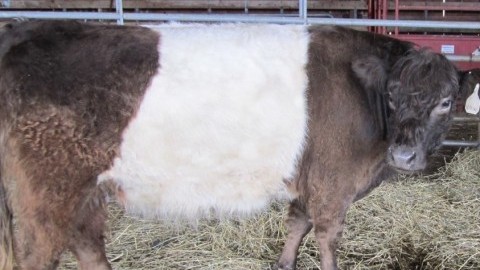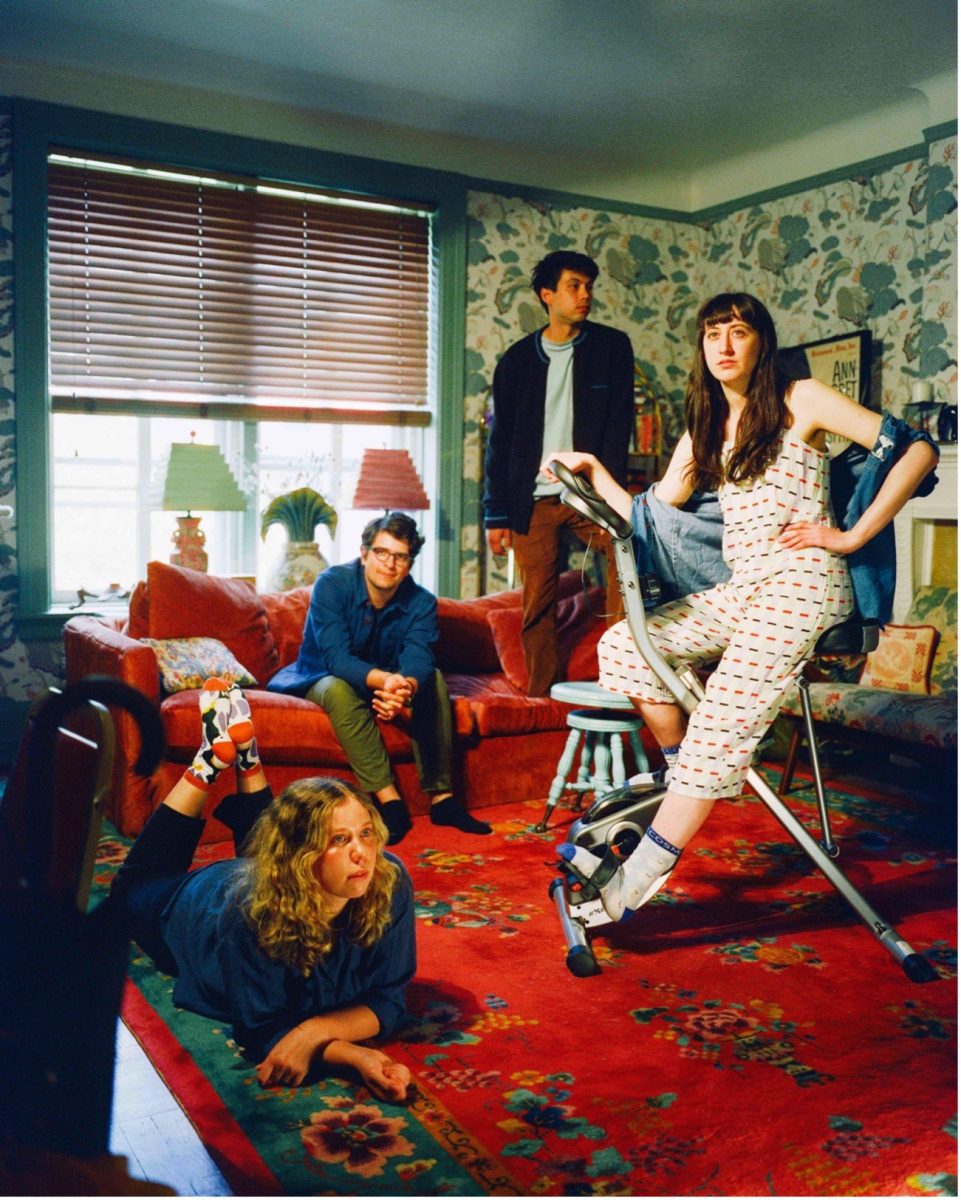When most people think of beef they think of the big, Black Angus cattle that have a good reputation for delicious hamburgers and steaks. In actuality there are multiple breeds of meat cattle that have developed around the world and are just as good as the Angus. One of the breeds is the Belted Galloway which is the breed that the UMass Animal Science department keeps.
The Belted Galloway is the oldest known English breed and was brought to Canada from its original home of Scotland. Galloways are well known for its belt, a white band that encircles the entire abdomen in varying sizes that cannot extend beyond the shoulder and hips. They come in colors of black, red, or dun, with black being the dominant trait, and have a thick outer fur with softer fur underneath to keep them warm in cold weather. They are incredibly hardy and have excellent foraging ability, and are known for a good quality carcass. The UMass Belted Galloway Management has the typical black but also has a few dun colored as well.
When people think of cattle they think of an animal with four stomachs. False. Cows actually have four compartments of one stomach that each plays a role in metabolizing plant based material. Cattle are ruminants, animals with a stomach that is divided into several parts and regurgitate, then swallow their food several times to better metabolize it. The constant regurgitating and swallowing is called rumination or chewing the cud. The four parts of the stomach are the rumen, reticulum, omasum, and abomasum, respectively.
The rumen is where solid food is broken down by microbes. Microbes are needed in the breakdown of plant material because animals are incapable of doing this by themselves. The feed, which is fermented by the microbes, is rhythmically churned and moved back up the esophagus several times to be ruminated before it is passed to the next compartment of the digestive system. Liquid goes to the reticulum, then to the omasum, and finally the abomasum where it then goes to the intestines. The omasum is made of strong muscles that squeeze water out of the food ingested and to further break down food particles. The abomasum is also called the true stomach because its function is similar to that of nonruminants.
A calf’s stomach, on the other hand, acts differently because it is not eating forage (plant material) and thus doesn’t need the rumen. Instead the milk goes into the reticulum then directly into the omasum until the calf is about three months old then the rumen is ready to function.
Brianna and Rebecca Swierk are Collegian contributors and can be reached at [email protected] and [email protected].
















